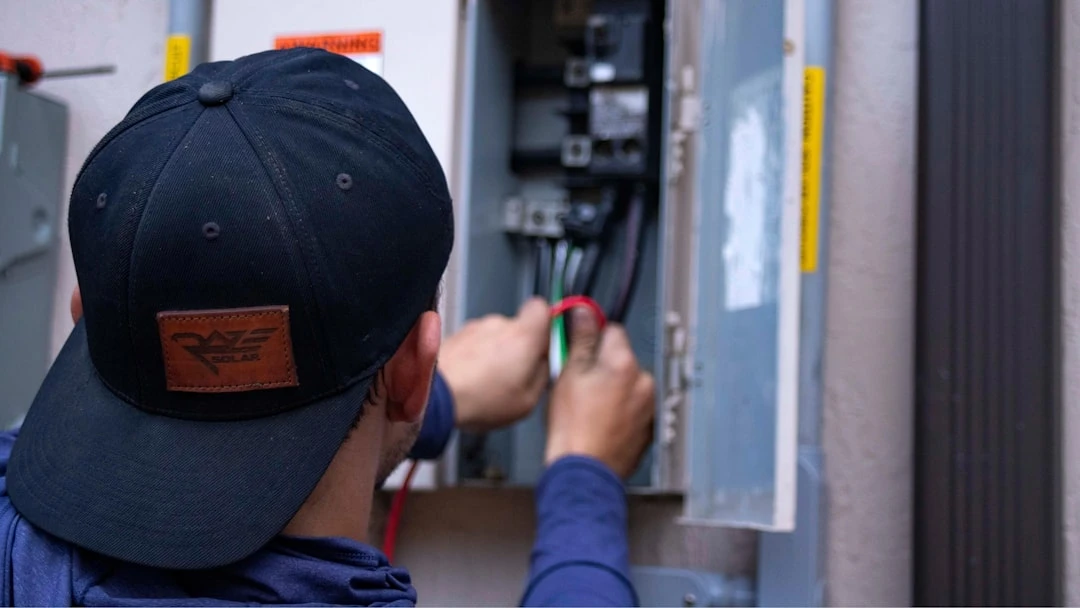How to Safely Inspect and Maintain Electrical Outlets and Switches

Electrical outlets and switches are an integral part of every home, but their improper use or neglect can pose serious hazards. Regular inspection and maintenance ensure that your home's electrical system operates safely and helps prevent potential electrical accidents. This guide is intended for property owners, tenants, and housing associations who want to ensure the safety of their home's or building's electrical system.
Why is it important to regularly inspect electrical outlets and switches?
Electrical problems are one of the leading causes of house fires. Worn, damaged, or incorrectly installed electrical components can cause electric shocks or even fires. Special attention should be paid to older buildings, where electrical installations may be deteriorated.
Just as you should regularly clean your washing machine or prevent mold growth in the bathroom, inspecting electrical components is part of comprehensive home maintenance that ensures the safety of you and your loved ones.
Visual inspection of electrical outlets and switches
Before performing a more thorough inspection, start with a simple visual review. This is the first and often the most informative step that helps identify visible hazards:
Look for visible damage - cracks, discoloration, melting marks, or burn marks on outlets and switches.
Check outlet stability - an outlet that is loose in the wall can be dangerous and requires immediate attention.
Monitor unusual heating - if an outlet or switch feels unusually warm during use, it may indicate overload or poor connection.
Check the condition of wires - review all visible wires and ensure their insulation is intact, without signs of crumbling or wear.
Practical steps for inspecting electrical outlets
1. Take safety measures into account
Before you start inspecting outlets or switches, keep in mind the following important safety requirements:
Turn off the electricity to the specific apartment either from the apartment or building main breaker. This is an extremely important step that protects you from electric shock.
Use a voltage tester to make sure the power is really turned off. Never rely solely on the position of a switch.
Keep a flashlight handy if you need to work in a dark room. This ensures good visibility and reduces the risk of injury.
2. Check outlet stability
Checking outlet stability helps identify loose or damaged components:
Make sure the outlet is firmly in the wall and does not move when you touch it. A moving outlet may indicate poor installation or loosened fasteners.
Check that the outlet cover plates are intact and properly fastened, with no cracks or signs of breakage.
Watch for outlet holes that are not overly worn or enlarged, which can lead to poor contact and unstable operation of devices.
3. Test outlet reliability
Once you are sure the outlet is visually in good condition, you can check its functionality:
Turn the electricity back on from the main breaker.
Use a special outlet tester that shows whether the outlet is properly connected and grounded. This is a simple and inexpensive tool that provides a quick overview of the outlet's condition.
Watch for sparks when connecting devices or unusual sounds that may indicate a problem with the outlet connection.
Switch inspection and maintenance
1. Identify switch types and inspection methods
Different switches require different approaches when inspecting:
Standard wall switch should click firmly on and off, without looseness or resistance. An uncertain click or intermediate position may indicate mechanical wear.
Dimmer switch should smoothly regulate light intensity without skipping or flickering throughout the entire control range.
Motion sensor switch should respond to movement evenly and quickly, without glitches or unnecessary delays.
2. Check switch reliability
Testing switch reliability helps identify potential problems before they become more serious:
Switch the switch on and off several times and observe its operation. A good switch works smoothly and consistently.
Watch for unusual sounds from the switch such as crackling or hissing, which may indicate internal damage.
Check for burn smell around the switch or color changes, which indicate overheating.
Common problems and their solutions
Outlet problems
The most common electrical outlet problems and their solutions:
Loose outlet - If the outlet moves in the wall, it should be secured or replaced, as it can cause short circuits and poor contact.
Outlet does not hold the plug firmly - Worn contacts do not ensure good electrical connection, which can damage connected devices. Such an outlet needs to be replaced.
Outlet gets hot - This may indicate overload or poor connection and requires immediate attention, as heating can cause insulation to melt and create a fire hazard.
Switch problems
The most common electrical switch problems and their solutions:
Switch does not click properly - Mechanical wear makes the switch unreliable and can lead to interrupted electrical contact. Such a switch needs to be replaced.
Switch buzzes at the back - Buzzing indicates electrical problems, which may be caused by poor connection or overload. This requires professional inspection.
Switch does not turn the light on or off - The problem could be in the switch, bulb, or wiring. Start with simpler inspection methods, such as changing the bulb, before tackling more complex problems.
When to call a professional electrician
While some simple inspections can be done yourself, there are situations where you should definitely call a qualified electrician:
If you notice burn marks, unusual heating, or melting marks on electrical components.
If an outlet or switch gives an electric shock, even if it seems minor or insignificant.
If immediately after connecting a device to the outlet, a safety breaker trips, indicating a possible short circuit.
If you have no experience with electrical work and need to open the housing of an outlet or switch to inspect internal components.
Sometimes electrical problems are of a more general nature and require a more thorough inspection. Such problems can be especially common in older apartments in Tallinn, where the electrical system may need a complete overhaul.
Maintenance of electrical outlets and switches
Regular maintenance helps prevent problems and extend the life of electrical components:
Cleaning - Remove dust and dirt from around outlets and switches with a dry cloth. Avoid moisture from getting into electrical components, as it can cause short circuits or damage.
Monitor outlet load - Avoid connecting too many devices to a single outlet or extension cord. Excessive load can cause overheating and fire hazard.
Replace outdated components - If outlets or switches are over 15-20 years old, consider replacing them with newer and safer ones, even if there are no visible problems.
Important safety guidelines
When working with electricity, always keep the following safety guidelines in mind:
Never use water to clean electrical components if they are connected to the power grid. Even a damp cloth can cause an electric shock.
Keep electrical tools and electrical components out of reach of children to prevent accidents.
Use only certified electrical products that comply with Estonian standards to ensure safety and reliability.
If it is a housing association, it is wise to consider housing association renovation loan for updating the electrical system, especially if it is outdated or does not meet modern safety requirements.
Summary
Regular inspection and maintenance of electrical outlets and switches is an important part of ensuring home safety. Simpler inspections and maintenance work can be done by any property owner or tenant, but for more complex problems, it is worth consulting a professional electrician.
If you plan to purchase new property, be sure to pay attention to the condition of the electrical system as well – this can save you large expenses in the future and ensure a safe living environment. Before buying a new apartment, always ask about the condition of the electrical system and when it was last inspected. If you have any doubts about the safety of your electrical system, be sure to consult a qualified electrician.
So, just as with repairing squeaky doors and floors or preventing blockages in the home, maintaining your electrical system is part of being a smart homeowner – it keeps your home safe and saves both time and money in the long run.




